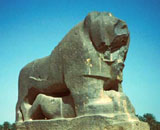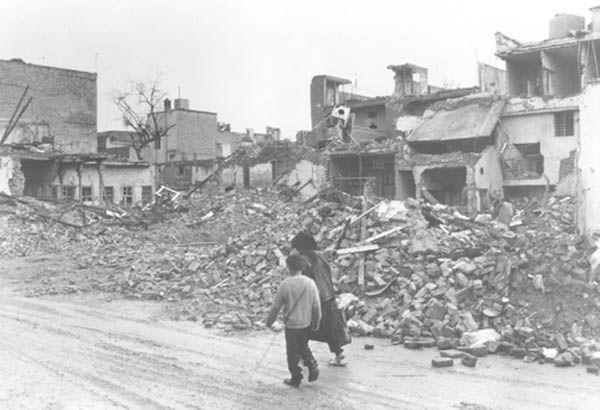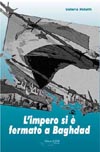
January 8, 2011
Soon, we will witness the 20th anniversary of the start of the first Gulf
War. When the first bomb fell on Iraq at 2:00 a.m. on January 17, 1991, the United States
began the military implementation of years of deceit and dirty tricks to attain a permanent foothold in the Middle
East. George Bush I enlisted, coerced and paid 27 other nations to help massacre Iraq, depriving these newly-won allies of any ethical high ground.
If you look at some of the countries involved in the anti-Iraq coalition, you will
see that they varied greatly in their reasons for becoming involved in the slaughter. Few came on board because they considered
it the right thing to do. As with the "alliance of the willing" that participated in the 2003 invasion of Iraq, many of the "allies" of the 1991 campaign participated only to receive a
payday from Washington.
Egypt, a long-time backer of Iraq,
initially declined. After George Bush I told the Egyptians he would forgive a $7 billion debt, the once Iraq-friendly Egyptian
government changed sides. Syria entered
the alliance because of long-time animosities between its president, Haffas al-Assad, and the Iraqi president, Saddam Hussein.
Coincidentally, Syria was on America’s
list of countries that support terrorism, but that did not affect Bush. Al-Assad’s payday came after the cease-fire
was signed between Iraq and the U.S. The Bush administration turned a blind eye to Syria’s sending more than
30,000 military personnel to Lebanon, leaving Syria with a tremendous amount of influence in that country. Ironically, the
Bush II administration called for the exit of Syrian troops from Lebanon
and threatened Syria with military force
if the troops remained. The difference between then and now is that Syria’s
former president Hafez al-Assad died and his son, Bashir, inherited the presidency of Syria. The young al-Assad did not share the same animosity with Iraq as his father and the two countries were experiencing flourishing trade and political
relations up to the time of the March 2003 invasion of Iraq.
Because it did not support U.S. intervention, Syria had to pay a price instead of being given preferential treatment as it was
in 1991.
Saudi Arabia, a country not exactly known for its progressive government, quickly sided with the
U.S. when Bush falsely proclaimed that Iraqi troops were stationed in Kuwait, just across the Saudi border, waiting to pounce on
them. On September 11, 1990, Bush told a joint session of Congress:
We gather tonight witness to events in the Gulf as significant as they are tragic.
One hundred and twenty thousand Iraqi troops with 850 tanks had poured into Kuwait
and moved south to threaten Saudi Arabia.
The Defense Department outdid Bush with an estimate of 250,000 Iraqi troops and 1,500
tanks. Bush’s and the Pentagon’s ominous warnings were based on falsehoods.
Pictures taken by Soyuz-Karta, a Soviet commercial satellite agency, of Saudi Arabia on September 11, 1990, and of Kuwait
on September 13, 1990 portrayed a different scenario. They showed no Iraqi presence near the Saudi border and only a small
percentage of the U.S. administration’s
estimate of the number of troops.
In December 1990, the St. Petersburg Times
of Florida purchased these photos from the Soviet agency.
They were analyzed by experts who concluded that the U.S.
estimate was based on lies. According to Peter Zimmerman, who served with the U.S. Arms Control and Disarmament Agency during
the Reagan administration: "The Pentagon kept saying, the Iraqi troops were there, but we do not see anything to indicate
an Iraqi force in Kuwait of even 20 percent
the size the administration claimed."
Jean Heller wrote a report for the St. Petersburg
Times in January 1991 about the quandary. However, the national media ignored the report and refused to publish it despite
the newspaper’s editors approaching the Associated Press twice and the Scripps-Howard News Service. According to Heller:
The troops that were said to be massing on the Saudi border and that constituted the
possible threat to Saudi Arabia that justified the U.S. sending of troops do not show up in these photographs. And when the
Department of Defense was asked to provide evidence that would contradict our satellite evidence, it refused to do so.
I think part of the reason the story was ignored was that it was published too close
to the start of the war. Secondly, and more importantly, I do not think people wanted to hear that we might have been deceived.
A lot of the reporters who have seen the story think it is dynamite, but the editors who have seen it seem to have the attitude,
"At this point, who cares? If the war ends badly with a lot of casualties, more than the administration had led us to
expect, you might hear of this story again."
Coincidentally, the same photos that failed to show proof of an Iraqi buildup portrayed
an American presence that was not supposed to be in Saudi Arabia
at the time. According to Zimmerman:
We could see five C-141s, one C5A and four smaller transport aircraft, probably C-130s.
There is also a long line of fighters, F-111s or F-15s, on the ground. In the middle of the airfield are what could be camouflaged
staging areas.
Several countries did oppose the overwhelming force that was brought against Iraq, but they paid a price for such a lack of pro-U.S. sentiment.
Aid was quickly cut to Jordan. Its leader,
the late King Hussein, was under strong pressure from his country-people not to support the U.S.
and he followed their lead, even though he was at one time, and again later became a U.S. ally and informant in the region. When told about the cessation of aid, King
Hussein stated, "We’re not that cheap." In the years after Desert Storm, King Hussein was brought back on
board the U.S. ship of influence in the Middle East.
Jordan became, and still is, the main area for U.S. intelligence and other operations in the region. For a short time, however,
King Hussein asserted his independence from the United States
and stood up for the principles and ideals of his people.
Yemen was hard hit by the immediate severing of U.S.
aid after it voted in the United Nations against the use of force against Iraq.
Cuba, a long-time U.S.
"enemy," was chastised after it voted the wrong way in the United Nations against "U.S. interests."
The U.S. version of democracy is
selective — you are allowed to vote freely, as long as the vote is in favor of the U.S. A few years after the Gulf War, an incident occurred that depicted this U.S. murky view of democracy. The first democratic elections
were held in the Serbian portion of Bosnia.
When the results were announced, then U.S. Secretary of State, Madeleine Albright quickly negated the election. When she was
asked by the press what made her decide to annul the results, she stated, "The wrong side won." In occupied Iraq, we see the same manipulation of democratic ideas occurring.
In the first year of control, U.S. authorities
shut down many newspapers and magazines for printing stories that were critical of the occupation.
The concept of the U.S.
using the United Nations as a forum was a sham. Until November 1990, the U.S.
considered the U.N. a useless organization that catered to Third World interests. The U.S. was quite vocal about its distaste for the U.N. and had
refused to pay a substantial amount of money owed to the organization. Then, in an about-face, shortly before a November 1990
vote on the Iraq issue, the U.S.
forked over $187 million to the U.N. This "enlightened" action only constituted a small portion of what it owed
to the world agency.
Much of the U.S.
seemed to have gone insane during the five weeks of massacre in 1991. We watched as politician-after-politician talked
favorably about what was happening. At times, it appeared that a vast portion of the U.S. political establishment was euphoric when describing the destruction. Unfortunately,
we did not see the millions of people, both inside and outside the U.S.,
who were aghast at such actions. Government ministers from France, Italy and Turkey resigned in disgust, but
the U.S. media did not deem their opposition
newsworthy. There was a virtual news blackout of dissent. We were not being told what was happening, and what we were being
told was mostly lies because the U.S.
military controlled the media. Shortly after the cease-fire was signed, Norman Schwarzkopf publicly humiliated the U.S. media by explaining how they printed everything exactly
the way the military described the conflict.
"No more Vietnams!"
we heard as the slaughter was occurring. This definitely was not Vietnam.
Iraq was a developing country that happened to be America’s
chosen enemy in exorcising the ghost of Vietnam.
After the cease-fire, even some ardent supporters of Desert Storm felt empty and confused. As one caller to National Public
Radio stated on March 5, 1991, "The United States isn’t going to save its soul by a massacre in the desert."
Despite the seemingly simple victory over Iraq
in 1991, the U.S. saw the Vietnam
analogy resurrected. After the 2003 invasion of Iraq, a strong resistance
took hold and many saw "another Vietnam" taking place for the
U.S. as the number of deaths of U.S. soldiers steadily increased.
The U.S. used all its experience
in deception and its advanced weaponry that was built up over the decades in demolishing Iraq, despite international law stating the military force can only be used to
reach a military objective. In this case, the military objective would have been to remove the Iraqi forces from Kuwait. The "allies" could have reached that goal
with a fraction of the force used, but instead, the U.S. threw everything
it had at Iraq.
After the slaughter, George Bush had the audacity to encourage the Iraqis to revolt
and topple Saddam Hussein. He had no knowledge of Iraqi or Arab culture and he thought that a good beating by the United States would automatically turn the Iraqis against
their president.
The only result of Bush’s call for an uprising was more bloodshed.
Certain factions in Iraq (Kurds
and Shi’ite Muslims) were given false hope by the United States and
they paid a heavy price for U.S. deception.
Many Iraqis supported Saddam Hussein before the hostilities and their allegiances did not change after the cease-fire.
This era is now being recalled by the U.S.
as one in which the Iraqi government massacred tens of thousands of innocent Shi’ite Muslims. However, the U.S. does not state that the Shi’ites, not the Iraqi
army, began the uprising and the vicious fighting affected both sides. Many Iraqi army personnel and civilian workers were
brutally killed by the Shi’ite insurgents. Photos came from Iraq
showing Shi’ite executioners working overtime using scythe-like instruments to chop the heads off individuals as they
were tied to tables. At one point, the insurgents of the north and south controlled 16 of Iraq’s 18 provinces. The Bush administration considered it a matter of time
until Baghdad fell.
Little-by-little, the Iraqi forces regained control of the country in brutal fighting.
When the smoke cleared, the Shi’ites and the Kurds lost. The blame for all this chaos and bloodshed can be placed directly
in the hands of the U.S. administration.
Coincidentally, the U.S. used the
excuse of mass graves in southern Iraq
as a reason for eventually toppling Saddam Hussein. For years, we heard of them, but after the illegal invasion of Iraq in March 2003, these mass graves came to the forefront.
The news headlines read of the discovery of many mass graves. Eventually, the number of bodies found was put at 400,000. However,
on July 18, 2004, British Prime Minister Tony Blair admitted to the British public that this was an inflated figure. There
were about 5,000 bodies, not 400,000 in graves in the north and south of Iraq. And, almost 100% were males of military age,
meaning they were participants in the insurrection against Baghdad, or Kurdish fighters from
the north of Iraq who died in the 1990s
during a Kurdish civil war, not civilian casualties massacred by Saddam Hussein. Further forensic studies showed that some
of the bodies were casualties of U.S.
bombing in 1991.
The American lack of knowledge of the Arabic language played right into the hands
of the administration. Pete Williams, the White House spokesman at the time, showed pictures of thousands of demonstrators
in Baghdad as the insurrection of 1991 reached its peak. He
told of how rare demonstrations were in Iraq
and mentioned that the Iraqi people were turning on their president. This could have been the official story if a few Arab-Americans
did not step forward with the truth. Yes, there were demonstrations, but the protestors were displaying signs and posters
demanding that the Iraqi government put a stop to the uprisings in the south and north of Iraq. Because few Americans can read Arabic, another convenient lie came into place
in American folklore.
When photos of devastation in Iraq
began to emerge, Bush tried to blame all of the destruction on Saddam Hussein, but the Iraqis did not buy the explanation.
They knew all the devastation to the infrastructure of the country was caused by U.S.
bombs, not Iraq’s retaliation against
the Kurds and Shi’ites. Blatant attempts at deceiving the world were put forth by the U.S. For instance, the U.S.
government showed photos of destroyed buildings and attributed the destruction to the Iraqi military. Under scrutiny, many
of these depictions were proven to be false. A common ploy was a U.S. government
spokesperson showing a part of Baghdad that was bombed by the U.S.
and telling the world that it was an area of Basra that was
destroyed by Saddam’s troops. This deception was quickly halted when enough people (photographers, journalists, etc.)
came forward and pointed out the inaccuracies.
Desert Storm and its aftermath virtually eliminated a country on this Earth. Iraq was left without fresh water and electricity. The first
United Nations inspection team to visit Iraq
after Desert Storm said the country had reverted to a "pre-industrial society."

The Mother of All Battles is available. To
order, please click on this link:
|



















